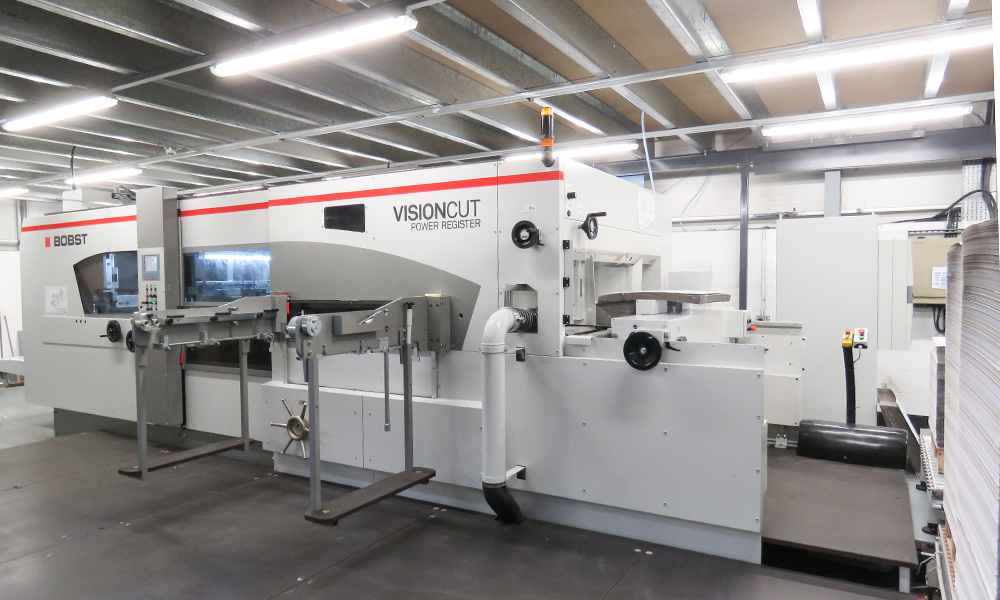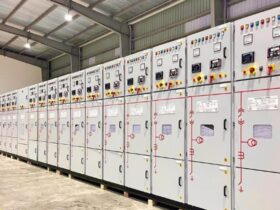Key Takeaways:
- Die cutting is a technique that involves using a specialized machine and a die to cut and shape various materials
- Die cutting offers precision, versatility, efficiency, and cost-effectiveness
- Die cutting finds applications in product packaging, marketing materials, and more
- There are different types of die cutting techniques, including rotary die cutting, laser die cutting, and steel rule die cutting
- When choosing a die cutting service provider, consider their experience, capabilities, reputation, and pricing
The Basics of Die Cutting
When it comes to creating intricate and precise designs, die cutting is a technique that stands out. Whether you are a business looking to enhance your product packaging or an individual searching for unique marketing materials, die cutting services can offer endless possibilities. In this comprehensive guide, we will delve into the world of die cutting, exploring its basics, applications, benefits, types of techniques, and how to choose the right service provider to meet your specific needs.
What is Die Cutting?
Die cutting is a process that involves using a specialized machine to cut and shape various materials, such as paper, cardstock, fabric, leather, and foam. It is widely used in industries like printing, packaging, automotive, electronics, and even arts and crafts. The technique allows for precision cutting and shaping of materials into specific designs using a die.
So, what exactly is a die? A die is a specialized tool or template made from metal or wood, often in the shape of a specific design or pattern. It is created by cutting or etching the desired shape into the material. The die is then mounted onto a die cutting machine, which applies pressure to the material and the die, resulting in a clean and precise cut.
How Does Die Cutting Work?
Die cutting machines work by feeding the material through a series of rollers. The die is positioned above the material, and as it passes through the machine, the die presses down onto the material, cutting it into the desired shape. The excess material, known as the waste or trim, is discarded, leaving behind the perfectly shaped piece.
There are two main types of die cutting: flatbed die cutting and rotary die cutting. In flatbed die cutting, the material is placed on a flat surface, and the die presses down to cut the shape. Rotary die cutting, on the other hand, involves using a cylindrical die that rotates at high speed, cutting the material as it moves along.
Why Choose Die Cutting Services?
Die cutting services offer numerous advantages over other cutting methods. One of the key benefits is the precision and accuracy it provides. Die cutting machines are designed to cut with extreme precision, ensuring consistent and high-quality results every time. This level of precision is particularly beneficial for industries that require intricate designs and shapes.
In addition to precision, die cutting is also highly versatile. It can be used to cut a wide range of materials, including paper, cardstock, fabric, leather, foam, and more. This versatility allows for endless possibilities in terms of design and application. Whether you need custom packaging, promotional materials, or even intricate decorations, die cutting can help you achieve your desired outcome.
Furthermore, die cutting offers efficiency and cost-effectiveness. The die cutting process is fast and efficient, allowing for high production volumes in a short amount of time. This can be particularly advantageous for businesses that require large quantities of cut materials. Additionally, die cutting eliminates the need for manual cutting, saving time and reducing labor costs.
Applications and Benefits of Die Cutting
Die cutting finds applications in various industries, each benefiting from its versatility and precision. Let’s explore some of the key applications and benefits of die cutting services.
Enhancing Product Packaging with Die Cutting
In the competitive world of retail, product packaging plays a vital role in attracting customers and creating a memorable brand image. Die cutting offers unique opportunities to enhance product packaging and make it stand out from the crowd. With die cutting, you can create custom shapes, windows, embossed designs, and even intricate patterns on your packaging materials.
For example, die-cut window boxes are a popular packaging choice in industries such as cosmetics, food, and electronics. These boxes feature a transparent window that allows customers to see the product inside, enticing them to make a purchase. Die-cut packaging can also incorporate creative shapes and designs that reflect the brand’s identity and add a touch of luxury and elegance to the product.
Creating Unique Marketing Materials
Die cutting opens up a world of possibilities when it comes to creating unique and eye-catching marketing materials. Whether it’s business cards, brochures, flyers, or promotional items, die cutting can help you create distinctive designs that leave a lasting impression on your target audience.
Imagine handing out business cards that are not only shaped like your logo but also feature intricate cut-out details. Such attention to detail can elevate your brand and make you memorable among competitors. Die cutting can also be used to create promotional items, such as bookmarks, door hangers, or even custom-shaped stickers, adding a touch of creativity to your marketing campaigns.
Efficiency and Cost-Effectiveness of Die Cutting Services
Die cutting services offer efficiency and cost-effectiveness, making them an ideal choice for businesses of all sizes. With die cutting, you can quickly produce large volumes of cut materials in a short amount of time. This level of efficiency is particularly beneficial for businesses with tight deadlines or those that require mass production.
Moreover, die cutting eliminates the need for manual cutting, saving valuable time and reducing labor costs. Instead of spending hours cutting materials by hand, die cutting machines can achieve the same result in a fraction of the time. This allows businesses to allocate their resources more effectively, focusing on other aspects of their operations.
Exploring Different Types of Die Cutting Techniques
Different types of die cutting techniques offer unique advantages and are suitable for various applications. Let’s examine three popular techniques: rotary die cutting, laser die cutting, and steel rule die cutting.
Rotary Die Cutting: A Versatile Option
Rotary die cutting is a versatile technique that involves using a cylindrical die to cut the material. The die is mounted on a rotary press, which rotates at high speed, allowing for efficient and precise cutting. This technique is commonly used for high-volume production and is suitable for materials such as paper, cardboard, fabric, and thin plastics.
One of the main advantages of rotary die cutting is its speed. The high-speed rotation of the die allows for rapid cutting, making it ideal for industries that require fast production cycles. Additionally, rotary die cutting offers great flexibility in terms of design and shape options. The cylindrical nature of the die allows for continuous cutting, enabling the creation of long and intricate patterns.
Laser Die Cutting: Precision at Its Finest
Laser die cutting is a cutting-edge technique that uses a high-powered laser beam to cut materials with extreme precision. Unlike other die cutting techniques, laser die cutting does not require physical contact with the material, reducing the risk of damage or distortion. This makes it suitable for delicate materials like paper, fabric, and even heat-sensitive materials.
One of the key advantages of laser die cutting is its ability to create intricate and complex designs. The laser beam can cut intricate patterns, sharp corners, and even engrave details onto the material. Laser die cutting also offers precise control over the depth and width of the cut, allowing for customization and personalization of the final product.
Steel Rule Die Cutting: Ideal for Large Volumes
Steel rule die cutting, also known as flatbed die cutting, is a traditional die cutting technique that uses a solid metal die to cut the material. The die consists of a thin strip of steel bent into the desired shape and mounted on a wooden or acrylic base. Steel rule die cutting is suitable for a wide range of materials, including paper, cardboard, leather, and foam.
This technique is often used for high-volume production, as it allows for fast and efficient cutting. The solid metal die can withstand repeated use, making it suitable for long production runs. Steel rule die cutting is cost-effective and offers excellent precision and accuracy, making it a popular choice in industries such as packaging, automotive, and signage.
Choosing the Right Die Cutting Service
Choosing the right die cutting service provider is crucial to ensure your project’s success. There are several factors to consider when selecting a die cutting provider, including their experience, capabilities, and reputation.
Factors to Consider When Selecting a Die Cutting Provider
First and foremost, consider the provider’s experience and expertise in die cutting. Look for a provider that has a proven track record of delivering high-quality results and has experience working with materials similar to yours. A well-established die cutting provider will have the knowledge and skills necessary to handle complex projects and offer innovative solutions.
It is also important to consider the capabilities of the die cutting provider. Determine whether they have the necessary equipment and technology to meet your specific requirements. For example, if you need laser die cutting, ensure that the provider has state-of-the-art laser cutting machines. Additionally, consider the range of materials they can work with and their ability to handle different shapes and sizes.
Another key factor to consider is the reputation of the die cutting provider. Look for reviews and testimonials from past clients to gain insight into their level of customer satisfaction. A reputable provider will have positive feedback and a strong reputation for delivering on time and within budget.
Reviewing Examples and Case Studies
Before finalizing your decision, ask the die cutting provider for examples of their past work and case studies. This will give you a better understanding of their capabilities and the quality of their work. Look for examples that are similar to your project to ensure they can meet your specific requirements.
Reviewing case studies can also provide valuable insights into how the die cutting provider approaches different projects and their problem-solving abilities. Look for case studies that demonstrate their creativity, innovation, and attention to detail. A die cutting provider that consistently achieves outstanding results will likely be a reliable choice for your project.
Understanding Pricing and Turnaround Time
Pricing and turnaround time are also important considerations when choosing a die cutting service provider. Request a detailed quote from the provider, including any additional charges for complex designs or rush orders. By comparing quotes from different providers, you can ensure you are getting the best value for your money.
Discuss the project timeline with the provider to ensure they can meet your deadline. Consider factors such as the complexity of the design, the quantity of materials needed, and any potential revisions or adjustments required. A reliable die cutting provider will provide realistic timelines and communicate any potential delays or challenges.
In conclusion, die cutting services offer endless possibilities for creating precise and intricate designs. Whether it’s enhancing your product packaging, creating unique marketing materials, or exploring the different types of die cutting techniques, the art of precision is at your fingertips. By choosing the right die cutting service provider that aligns with your specific needs and requirements, you can bring your vision to life with efficiency, cost-effectiveness, and exceptional quality.
FAQ
Question: What is die cutting? – Die cutting is a process that involves using a specialized machine and a die to cut and shape various materials, such as paper, cardstock, fabric, leather, and foam.
Question: How does die cutting work? – Die cutting machines work by feeding the material through a series of rollers. The die is positioned above the material, and as it passes through the machine, the die presses down onto the material, cutting it into the desired shape.
Question: Why choose die cutting services? – Die cutting services offer precision, versatility, efficiency, and cost-effectiveness. It provides consistent and high-quality results, allows for cutting a wide range of materials, and enables high production volumes in a short amount of time.
Question: What are the applications and benefits of die cutting? – Die cutting finds applications in product packaging and marketing materials. It enhances product packaging by creating custom shapes and designs. Die cutting helps create unique and eye-catching marketing materials that leave a lasting impression. The technique also offers efficiency and cost-effectiveness by allowing quick production of large volumes and eliminating the need for manual cutting.
Question: What types of die cutting techniques are there? – There are different types of die cutting techniques, including rotary die cutting, laser die cutting, and steel rule die cutting.
Question: What is rotary die cutting? – Rotary die cutting involves using a cylindrical die that rotates at high speed, cutting the material as it moves along. It offers versatility, speed, and flexibility in terms of design and shape options.
Question: What is laser die cutting? – Laser die cutting uses a high-powered laser beam to cut materials with extreme precision. It can create intricate and complex designs without physical contact with the material.
Question: What is steel rule die cutting? – Steel rule die cutting, also known as flatbed die cutting, uses a solid metal die to cut the material. It is suitable for a wide range of materials and is often used for high-volume production because of its efficiency and cost-effectiveness.
Question: How do I choose the right die cutting service? – When choosing a die cutting service provider, consider their experience, capabilities, reputation, and pricing. Look for a provider with a proven track record, relevant equipment, positive reviews, and examples of past work. Also, consider their pricing and turnaround time to ensure they can meet your specific requirements.












Find Us on Socials